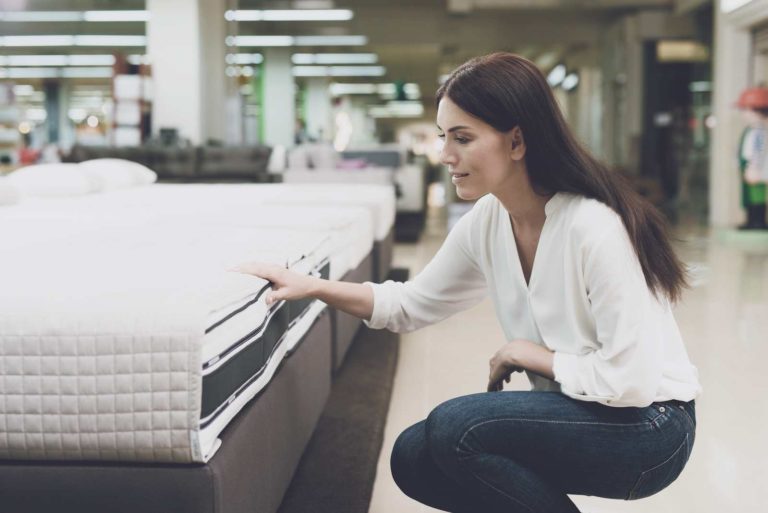In some ways, buying a mattress can be even more confusing than buying a new car. There are dozens of options, but they all look exactly alike—a plain white rectangle.
What’s a consumer to do?
First, realize that more expensive is not always better. Industry experts say that a top-notch mattress doesn’t have to cost more than a thousand dollars.
The most important, thing, in fact, is simply how the mattress feels to you. And that doesn’t mean flopping down on a mattress for two minutes in a showroom. You have to really give it a good test run—for at least 10 minutes. And remember to position yourself like you most often do at home, whether you’re a side, back, or belly sleeper.
If you’re feeling self-conscious, remember that this is what showrooms exist for—and think how bad you’ll feel if you spend $800 on a mattress that feels too firm or too soft once you actually sleep on it.
Choose Your Support
The first step in choosing a mattress is deciding what kind of a core you prefer. Here’s a quick primer:
• Innerspring. By far the most common type of mattress sold. These days, most coils are individually enclosed, which prevents springs from poking through. There may be memory foam, latex, or pillow layer on top of the springs, and the one you choose is a simple matter of individual preference. Sales people may tell you that more coils are always better, but you don’t really need a coil count above 390.
• Foam. Memory foam was developed in 1966 by NASA to improve the safety of aircraft cushions, but it hit the civilian world in 1991 with the introduction of the Tempur-Pedic mattress—and has been growing in popularity ever since. Memory foam mattresses are known for their comfort as they contour to the shape of your body. They are also relatively firm. The down side is that some sleepers find that the mattress traps heat and makes them uncomfortably warm.
• Latex. This is ideal for those who like firm, bouncy support throughout the entire bed. Because it doesn’t conform to your body like memory foam, this kind of mattress feels more supportive to some.
• Air-filled. We’re not talking about the kind of mattress you blow up for guests. This kind of air mattress looks like a standard mattress, but uses air-filled chambers instead of springs or foam. The primary advantage of this type of mattress is the adjustability. With the push of a button, you can easily adjust the pressure on either side of the bed. Some sleepers like the feeling of weightlessness this mattress provides.
Storing Your Mattress
If you have a mattress that you need to store, you’ll want to take a few steps to protect your investment. Dust, moisture, and dander are all enemies of a clean mattress—and things you’ll want to avoid.
How? Cover your mattress in a mattress protector and make sure to store it in a flat position in an area of your house that is not subject to humidity. Also be careful not to store heavy objects on top of your mattress.
At StorageMart, you can rent a climate-controlled self-storage unit as small as 25 square feet or so or as big as a garage. Check out our storage unit guide or rent a unit online today.


